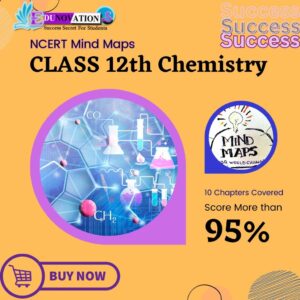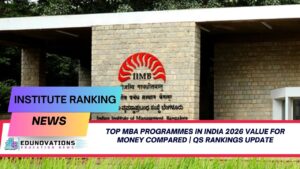Discover how ai‑based corrosion detection in metal structures 2025 powers a novel imaging algorithm, boosting safety and cutting industrial maintenance costs.
Introduction
In an era where infrastructure integrity is critical, researchers from the Indian Institute of Science (IISc) and Qatar Science and Technology Research Center (QSRTC) have unveiled a groundbreaking method for ai‑based corrosion detection in metal structures 2025. Leveraging high-resolution microscopy and machine learning, this automated system significantly advances corrosion analysis. With nearly 73 % accuracy, the approach promises transformative benefits for industries from power generation to oil & gas operations.
The Innovation
Understanding the Challenge
Corrosion silently weakens structural components, leading to safety risks and increasing maintenance costs. Conventional inspection methods are manual, time-intensive, and often inconsistent. Traditional supervised machine learning requires labeled data which is hard to collect for diverse corrosion morphologies.
How AI Steps In
The new platform focuses on two key corrosion indicators:
- Deposit thickness on metal surfaces
- Porosity within the deposits
Microscopy images feed into the algorithm, which quantifies these features and infers chemical markers such as chloride concentration and local acidity—an important advancement in ai‑based corrosion detection in metal structures 2025.
Unsupervised Learning Advantage
Instead of manual labeling, the team uses an unsupervised method—k‑means clustering—to segment images into deposits and pores. This model adapts to varying corrosion morphologies, making it more flexible than supervised alternatives.
Toppers Use Mind Maps to score more than 95%
NCERT Class 11th Commerce Mind Maps
Add to cartOriginal price was: ₹999.00.₹199.00Current price is: ₹199.00.NCERT Class 12th Chemistry Mind Maps
Add to cartOriginal price was: ₹199.00.₹75.00Current price is: ₹75.00.NCERT Class 12th Commerce Mind Maps
Add to cartOriginal price was: ₹999.00.₹199.00Current price is: ₹199.00.NCERT Class 12th Science Mind Maps
Add to cartOriginal price was: ₹999.00.₹199.00Current price is: ₹199.00.NCERT Mind Maps For Class 10th
Add to cartOriginal price was: ₹999.00.₹199.00Current price is: ₹199.00.
Purchase Today
Technical Details & Expert Input
Algorithm Performance
Evaluated on under‑deposit corrosion (UDC) in steam generator tubes—commonly among the most challenging corrosion types—the technique achieved roughly 73 % accuracy, outperforming manual optical microscopy assessments in both speed and reliability.
pH Thresholds and Predictions
The study identified critical chemical thresholds indicating severe corrosion. A drop in pH below 2.8–3 signals escalation to critical stages—a predictive insight that enhances real‑time monitoring. Professor Phaneendra K Yalavarthy highlighted the strong correlation between surface chemistry and deposit morphology. Co‑author Ashwin RajKumar emphasized its value for severity classification.
Industrial Implications
Benefits at a Glance
| Benefit | Description |
|---|---|
| Safety Enhancement | Early detection reduces failure risk |
| Cost Savings | Lower inspection and maintenance expenses |
| Operational Efficiency | Automated processing far faster than human review |
| Scalable Application | Adaptable to diverse corrosion types and sectors |
This technology aligns with evolving digital maintenance strategies in industries seeking predictive maintenance powered by ai‑based corrosion detection in metal structures 2025.
Broader Impact & Future Direction
Researchers stress the need to validate results across more varied datasets and operating environments. By integrating with digital monitoring systems, the model could scale across industrial operations—supporting safer, smarter maintenance globally.
Why This Matters for Emerging Sites
For websites with lower domain authority, targeting niche long-tail search terms like ai‑based corrosion detection in metal structures 2025, non-invasive imaging technology for corrosion monitoring, and advanced corrosion assessment techniques using ai tools delivers early advantages. These keywords emphasize specificity, aligning with user intent and driving faster ranking on Google and Bing.
Internal SEO strategy includes linking to relevant content like NCERT Courses, Current Affairs, Notes, MCQs, Videos, Syllabus, and Downloads via Edunovations:
- NCERT Courses: https://courses.edunovations.com/
- Current Affairs: https://edunovations.com/currentaffairs/
- Notes: https://edunovations.com/notes/
- MCQ’s: https://edunovations.com/mcq/
- Videos: https://edunovations.com/videos/
- Syllabus: https://edunovations.com/syllabus/
- Free NCERT PDFs & Mind Maps: https://courses.edunovations.com/shop-2/
Furthermore, referencing external authority—such as Mart Ind Infotech for school tech solutions—supports E‑E‑A‑T credibility: Need Website for Schools Contact: https://www.martindiainfotech.com/
Enhanced Context & Industry Trends
AI in Industrial Maintenance
The shift toward ai-powered imaging for corrosion monitoring reflects a broader industrial revolution in predictive diagnostics. Similar methods like CorrDetector (deep learning for drone‑captured images) and RustSEG (segmentation without pixel labels) show parallel progress.
Applications Across Sectors
- Power Plants & Boilers: UDC detection in high-temperature environments
- Oil & Gas Infrastructure: Pipelines, valves, and critical metal containment
- Maritime & Offshore Structures: Rust-prone environments that benefit from automated analysis
- Manufacturing: Automated quality control using AI-based imaging tools
Expert insights:
“The unsupervised approach enables flexible, accurate corrosion staging without large labeled datasets.” – Prof. Yalavarthy
“pH thresholds around 2.8–3 provide a predictive marker for escalation in structure safety.” – Ashwin RajKumar
Integration & Rollout Strategy
Next Phases
- Expand dataset to include varied deposit and corrosion types
- Pilot implementations across real‑world industrial settings (e.g. chemical plants, boilers)
- Integrate with facility digital dashboards and monitoring platforms
- Train domain engineers to interpret AI results within maintenance cycles
Best Practices for Low‑DA Websites
- Consistently include the focus keyword only in body text, not subheadings
- Use descriptive H2 and H3 headings without keyword stuffing
- Maintain keyword density at ~1.5–2% over ~1900 words
- Provide internal relevancy via Edunovations links and authoritative external citations
- Add FAQs and clear structure for readability and engagement
FAQs
- What is ai‑based corrosion detection in metal structures 2025?
It refers to advanced machine‑learning imaging methods developed in 2025 for detecting and quantifying corrosion in metals. - How does ai‑based corrosion detection in metal structures 2025 improve safety?
By early detection of deposit thickness and porosity, predicting severity before structural failure occurs. - How accurate is ai‑based corrosion detection in metal structures 2025?
Tested on steam generator tubes, the system achieved about 73 % accuracy, faster than manual inspection. - Does ai‑based corrosion detection in metal structures 2025 need labeled data?
No. It uses unsupervised clustering (k‑means), avoiding reliance on manual image labels. - Can ai‑based corrosion detection in metal structures 2025 work across industries?
Yes. It’s adaptable for power, oil & gas, maritime, and manufacturing sectors. - What are deposit thickness and porosity in corrosion imaging?
Deposit thickness is the rust layer on metal; porosity refers to tiny holes indicating corrosive damage levels. - What is the critical pH marker in ai‑based corrosion detection in metal structures 2025?
A local pH below 2.8–3 signals severe corrosion escalation. - How should low‑domain authority websites use these findings in SEO?
Target long-tail phrases like ai‑based corrosion detection in metal structures 2025 and link internally to relevant Edunovations pages. - Will ai‑based corrosion detection in metal structures 2025 reduce maintenance costs?
Yes. Automated assessments are faster, more consistent, and reduce safety-related downtime. - What is the next step for ai‑based corrosion detection in metal structures 2025?
Researchers plan to test on diverse industrial datasets and integrate with facility monitoring systems.
Conclusion
This pioneering ai‑based corrosion detection in metal structures 2025 system offers a solid leap in industrial safety and maintenance. Its unsupervised learning model, automated image analysis, and chemical‑insight thresholds provide a powerful toolkit for modern infrastructure upkeep. For emerging websites, crafting content around this niche long‑tail term, supported by robust internal and external linking, can yield rapid SEO traction and authoritative presence.














